
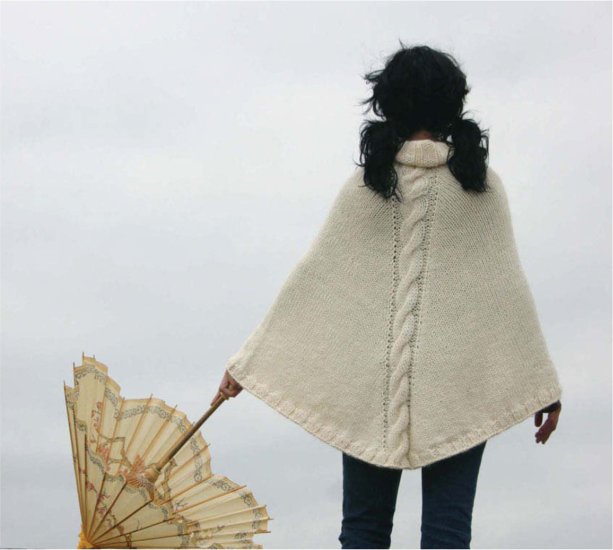
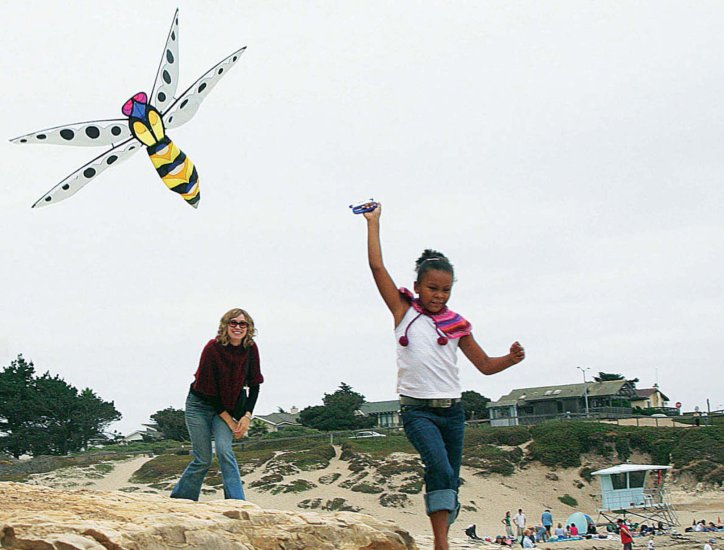
VIVA PONCHO
twenty ponchos & capelets to knit
christina stork leslie barbazette
STC CRAFT | A MELANIE FALICK BOOK | NEW YORK Copyright 2005 Christina Stork and Leslie Barbazette Photographs copyright 2005 David Verba All rights reserved. No portion of this book may be reproduced, stored in a retrieval system, or transmitted in any form or by any means, mechanical, electronic, photocopying, recording, or otherwise, without written permission from the publisher. Published in 2005 STC Craft: A Melanie Falick Book 115 West 18th Street New York, NY 10011 www.abramsbooks.com
Library of Congress Cataloging-in-Publication Data (Print) Stork, Christina. Viva poncho : twenty ponchos and capelets to knit / Christina Stork & Leslie Barbazette. p. cm.
Includes index. 1. KnittingPatterns. 2. Cloaks. Shawls. I. I.
Barbazette, Leslie. II. Title. TT825.S754 2005 746.432043dc22 200459136 ISBN: 1-58479-421-6 (Print) ISBN: 978-1-4532-6846-9 (ePub) Designed by Leslie Barbazette Stewart, Tabori & Chang is a subsidiary of 
for jason & sacha
credits & thanks
WED LIKE TO THANK OURPhotographer David Verba
Editors Marisa Bulzone, Melanie Falick, Dee Neer, and the folks at Stewart, Tabori & Chang
Knitters Lisa Morter, Matthew Sumner, Sonya Philip, Rachael Herron, Marilyn Stemerick, Jennifer Hughes, Keiran Best, Tessa ODonnell, Amy Hsu, and Michael Baum
Models Christina Lozano, Lisa Solomon, Rachel Konte, Assata Konte, Jonathan Hunt, Hiya Swanhuyser, Keiran Best, Amy Hsu, Brigid Hewitt, and Duchess
Symbolcraft Creatrix Dee Neer Thanks to the customers and staff of Article Pract for being such a source of inspiration. Thanks to our families and friends for making us the strong and sassy ladies we are today.
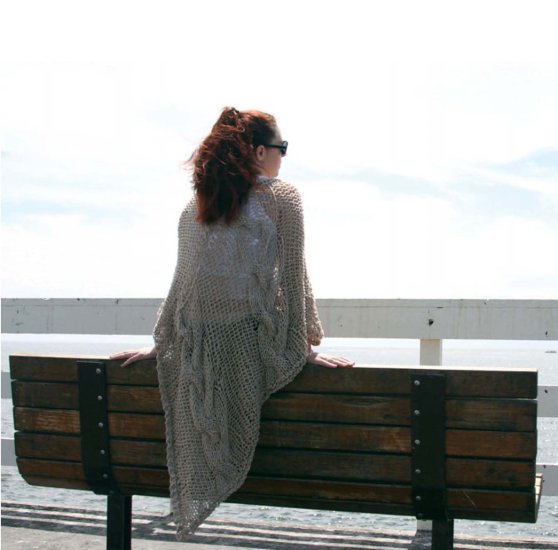

introduction
I MADE THIS Sick of scarves? Have you knit one too many hats? Eager to try your hand at a garment, but want something a bit more accessible than a sweater? Youre not alone.
We think ponchos and capelets are a perfect next step for a newer knitter and a welcome break for old hands. Ponchos are also great teaching tools: they take the knitter step-by-step through techniques that can seem daunting if attempted all at once. One of the things we love most about ponchos is their flexibility. There are many basic shapes and within each shape are myriad possibilities. You can easily take a basic shape, add your favorite design elements, and make it your own. On the following pages youll find basic shapes, to which weve added some details to create 20 different ponchos and capelets.
Youll see all the tools we used to create our versionsyou can either play with ours or create your own.
history
Variations on capes and capelets have been worn for centuries. Consider, for example, the
paenula, a hooded, circular cloak made of wool or leather that was worn by the ancient Romans. Or the
huque, a short, flowing tunic with open sides that clothed medieval Europe. The poncho has its roots in the
serape, a heavy, woven horse blanket worn like a shawl or sewn together in traditional Mexican and Navajo cultures. But it wasnt until the mid-1960s that the poncho became a fashion icon.
It was during that time that American politics and cultural attitudes manifested themselves in fashion by rebuffing some of the more formal and coiffed ideals of the past. Ponchos, caftans, Nehru jackets, and other garments from foreign traditions were embraced by the hippie culture as statements of global consciousness. As the 1970s approached, the craft movement took hold of fashion, first by way of tie-dye and batik, and then by means of all forms of handmade clothing. 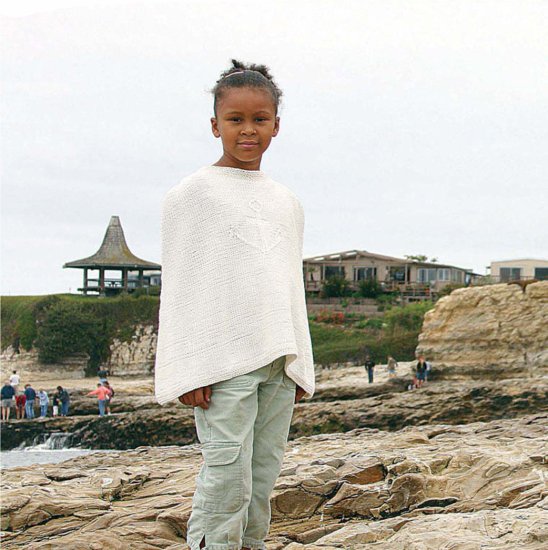
 As punk and New Wave moved in, ponchos and hippie fashions moved outand onto the childrens racks in clothing stores. Most of us who grew up in the 70s had a poncho Christina liked to wear hers backward over her head, pretending she had long hair. Now ponchos are back in fashion, big time.
As punk and New Wave moved in, ponchos and hippie fashions moved outand onto the childrens racks in clothing stores. Most of us who grew up in the 70s had a poncho Christina liked to wear hers backward over her head, pretending she had long hair. Now ponchos are back in fashion, big time.
Were seeing them across the boardon the runway and at the mall, on moms, tweens, and babies too. And why not? Ponchos are the perfect accessory: theyre easy to wear, can be dressy or casual, and are just right for a chilly night at the beach or the over-airconditioned office. Thats why we say Viva Poncho!
how to use this book
TOOLS Each project needs the right tools, and the poncho is no exception. We need the right yarnand the right needle to get the correct gauge with that yarn. But wed like to offer you more tools to play with: design tools. Each section of this book is concerned with a different type of poncho: one-piece, two-piece, and capelet.
Within each section youll find more options: squares, raglans, circles, cardiganseach design element gives you the opportunity to select the look and shape thats most appealing to you. Then the tools get refined once more: Do you want to add a stitch design to your garment to give it that special look? Perhaps youd rather use more than one color, or a variegated yarn to achieve your vision? Then there are the little touches, what we call add-ons. These tools allow you to complete the picture in style. Feel like sporting a cowl neck or a hood? Well teach you how. Heres our very simple formula for achieving exactly what you want in a poncho or capelet:  Each section represents a different shape. Look at all the patterns to get a sense of types of ponchos.
Each section represents a different shape. Look at all the patterns to get a sense of types of ponchos.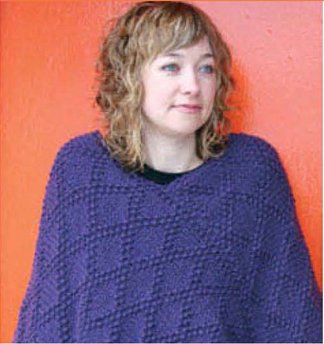
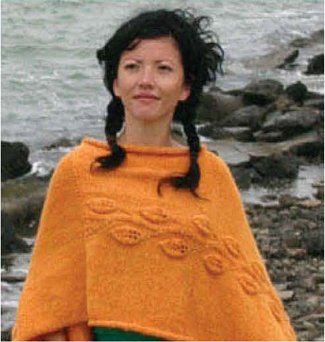 Amelia and Frida are examples of how to customize your poncho using a stitch pattern.
Amelia and Frida are examples of how to customize your poncho using a stitch pattern.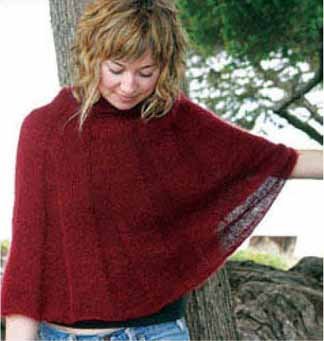
 Mae and Greta are examples of how to customize your poncho by changing color and choosing add-ons.
Mae and Greta are examples of how to customize your poncho by changing color and choosing add-ons.
Next page
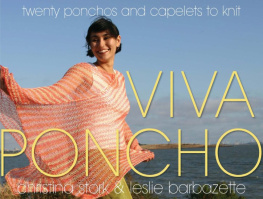

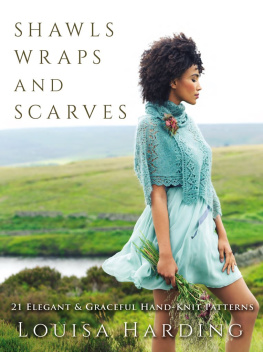
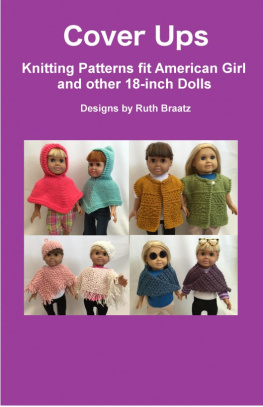

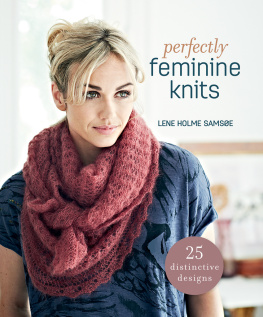
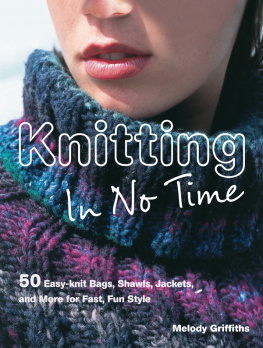
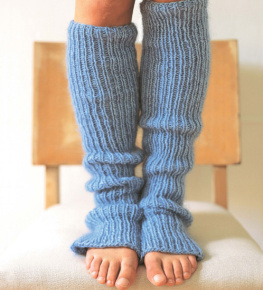








 As punk and New Wave moved in, ponchos and hippie fashions moved outand onto the childrens racks in clothing stores. Most of us who grew up in the 70s had a poncho Christina liked to wear hers backward over her head, pretending she had long hair. Now ponchos are back in fashion, big time.
As punk and New Wave moved in, ponchos and hippie fashions moved outand onto the childrens racks in clothing stores. Most of us who grew up in the 70s had a poncho Christina liked to wear hers backward over her head, pretending she had long hair. Now ponchos are back in fashion, big time. Each section represents a different shape. Look at all the patterns to get a sense of types of ponchos.
Each section represents a different shape. Look at all the patterns to get a sense of types of ponchos.
 Amelia and Frida are examples of how to customize your poncho using a stitch pattern.
Amelia and Frida are examples of how to customize your poncho using a stitch pattern.
 Mae and Greta are examples of how to customize your poncho by changing color and choosing add-ons.
Mae and Greta are examples of how to customize your poncho by changing color and choosing add-ons.